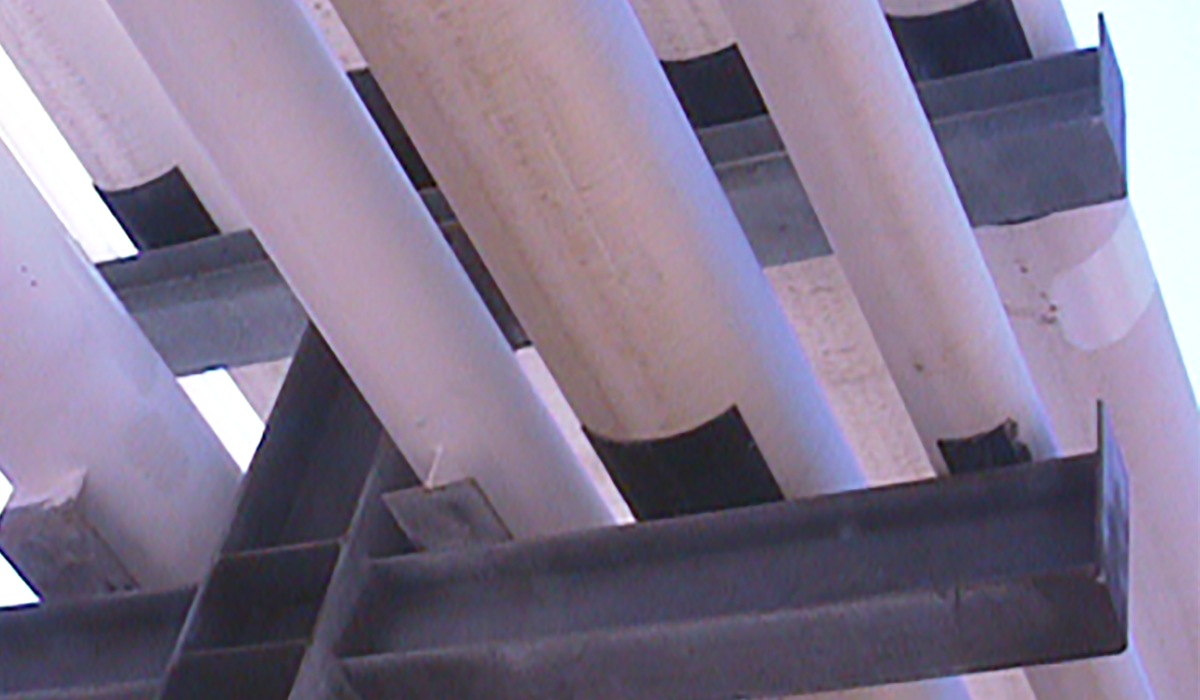
Pipe systems are up against a host of dangerous forces. When corrosion or wear takes hold, your system can fall apart in a hurry. But there’s a simple pipe support with a growing reputation in the piping world as a pipe protector: wear pads.
Wear pads can keep corrosion out, keep costs down, and prevent costly downtime that comes with repairs. Wondering how these isolators are made to strengthen your pipe system? Read on to learn five key ways wear pads can strengthen your system.
What Is a Wear Pad?
A wear pad is a pipe support that isolates pipes and reduces metal-on-metal damage. It’s made of a composite material that fits on the outer diameter of your pipe. That pad acts as the main contact point between your pipe and the support beam that your pipe rests on.
Does Your Piping System Need Wear Pads?
Whether it’s obvious or subtle, your piping system is constantly being threatened by wear, tear, and corrosion. Beyond the immediate financial costs, unchecked corrosion can do even more severe damage to your piping system. As pipes weaken, they can break down. For major industrial piping operations, that can quickly turn into shutdowns, damaged equipment, and even on-site injuries.
Wear pads are one solution that helps you stop pipe corrosion and boost pipe system longevity. Here’s how these pipe supports are designed to stop corrosion, minimize wear, and strengthen your piping system:
1. They Reduce Metal-on-Metal Damage
Any time the metal of heavy pipes scrapes on surrounding metals, it can damage your system. As a whole, metal-on-metal contact causes several problems that wear pads can prevent:
- Galvanic corrosion: When dissimilar metals collide, it can kick off an electrochemical reaction called galvanic corrosion. This corrosion can destroy metal and lead to ruptured pipes. Wear pads isolate pipes by laying down a physical, nonmetallic buffer in between metal pipes and metal beams. Thanks to this isolation, incompatible metals stay separated and safe from galvanic corrosion.
- Metal-to-metal wear: Even if the metal of pipes is compatible with surrounding metal, any time metals rub together, it can cause damage. Pipes may seem stable when they’re resting on support beams, but thermal expansion can cause pipes to shift and move along bare metal surfaces. As a result, their outer coatings can wear down or rupture. Wear pads fit around the outer surface of pipes and absorb friction, preserving the metal of pipes.
2. They Stop Crevice Corrosion
As metal rubs on metal, it doesn’t just wear down your pipes. When your pipes move and scrape on beams, the motion pulls off the pipe’s outer layer. This can create grooves where microbes can creep in. As a result, your pipes can harbor corrosive bacteria, and crevice corrosion can spread throughout your system.
Wear pads stop these corrosive cells from forming because they absorb surface impact and protect your underlying pipe’s metal.
3. They Account for Thermal Movement
Pipes are constantly moving. The movement may not be significant enough for you to notice, but your pipes are expanding and contracting as temperatures change. That’s why it isn’t always ideal to simply lay down a composite piece and pin it to the beam with a restraint. In some cases, this can cause point loading and worse damage.
Wear pads allow the pipe to move naturally, without adding extra pressure to the pipe’s surface. Instead, it acts as a protective surface your pipe can rest on—so your pipes aren’t restricted, and they last longer.
4. They Move with Pipes
You may be wondering, “Why not just lay down a composite slab directly on the beam?” This method is commonly used as an attempt to prevent corrosion, but it isn’t always effective.
Unfortunately, if you simply lay composite material under your pipe, dust can slide between the pipe and pad. Over time, that can create a sandpaper-like layer of debris to be trapped between your pipe and your support. That debris can cut into your pipe’s surface, causing worse damage.
How are wear pads a better solution?
Because they’re fixed directly to the pipe’s outer diameter, wear pads move along with the pipe. Doing so allows them to protect the pipe even if dust or grit piles up beneath them.
5. They Don’t Require Welding
Welding can be great when it’s necessary, but it can also leave your system with corrosive weak spots. Avoiding welding whenever you can will help you keep your pipe system fully intact and less susceptible to corrosion. This is another way wear pads add strength to your piping system.
Wear pads add a durable layer of protection without requiring any welding. Instead of calling on specialists for installation, you can attach wear pads directly to pipes with an extremely strong epoxy adhesive. In the long run, that keeps piping systems stronger and saves you money on costly weld inspections or specialized labor.
Learn More Ways to Protect Your Pipe System
Wear pads are designed to stop corrosion, preserve pipes, and drive long-term pipe system performance. And they are not the only pipe supports made to save you money in the long run.
Interested in learning all of the secrets to building a stronger pipe system? Read our Complete Guide to Pipe Restraints to find out which supports your system needs most.






